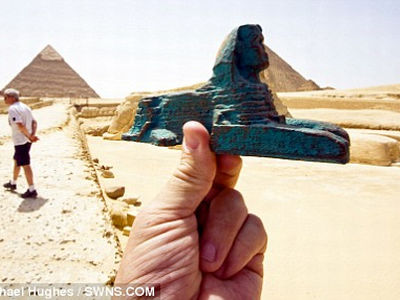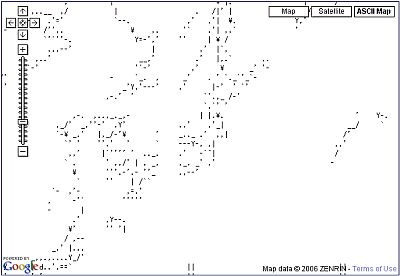An attempt to create a new interior design using image generation AI 'Stable Diffusion'

An attempt to have AI generate various interior designs using ``
Using AI for design inspiration
— Karen X. Cheng (@karenxcheng) December 20, 2022
We used Stable Diffusion Depth to Image to get the consistency - collab with @justLV
See below for our process #ArtificialIntelligence #stablediffusion #interiordesign pic.twitter.com/teImanZsZF
According to Mr. Alvey, this attempt uses a model called ' Depth-Guided ' that appeared in version 2.0 of Stable Diffusion, which can estimate the depth of the input image and output the image. We have AI propose various interior designs based on the interior.
I used the #StableDiffusion 2 Depth Guided model to create architecture photos from dollhouse furniture.
— Justin Alvey (@justLV) December 20, 2022
By using a depth-map you can create images with incredible spatial consistency without using any of the original RGB image.
See ???? https://t.co/jAFWSxrCux
Depth-Guided model is a model added to enhance Stable Diffusion's img2img function (a function to generate another image from one image). Since the depth information of the input image is estimated and another image is generated based on it, it is characterized by being able to strongly reflect the composition of the original image in the output image. The following images are 'input image', 'depth information extracted from the input image', and 'image newly output based on depth information' from the left.

'The Depth-Guided model has been tweaked since version 2.0 of Stable Diffusion and is unique due to the presence of additional depth-related channels,' says Alvey. In addition, the Depth-Guided model seems to use MiDaS, a model that predicts depth from a single image. map.
2/ This model is unique as it was fine-tuned from the Stable Diffusion 2 base with an extra channel for depth.
— Justin Alvey (@justLV) December 20, 2022
Using MiDaS (a model to predict depth from a single image), it can create new images with matching depth maps to your 'init image' pic.twitter.com/nq9xuvkUY7
And the image of the following tweet is output based on the depth map. Alvey said, ``By setting the denoising strength to '1.0', the original image was not used. Simple, easy-to-understand shapes such as furniture worked best for the input image,' he tweeted.
3/ I set the denoising strength to 1.0 so that none of the original RGB image was used
— Justin Alvey (@justLV) December 20, 2022
Even with widely different prompts it was able to generate consistent objects
Using simple, recognizable shapes such as wooden doll-house furniture worked great for this pic.twitter.com/tFu4IHezR4
It seems that the output image will look like a doll house due to extreme perspective when it is a normal photograph. However, it seems that the problem was solved by taking a picture away from the subject with a longer focal length (3x zoom for iPhone).
4/ Regular photos ended up having an unavoidable “doll-house” feel to them (even with heavy prompt tweaking) due to the extreme perspective.
— Justin Alvey (@justLV) December 20, 2022
I found that changing to a longer focal length (3x on an iPhone) and capturing from further away resolved this.pic.twitter.com/Hs3VKFFvZn
There is also an example of the text that Alvey entered when generating the image.
'A beautiful rustic Balinese villa, architecture magazine, modern bedroom, infinity pool outside, design minimalism, stone surfaces' )”
5/ Here are a few of the prompts used:
— Justin Alvey (@justLV) December 20, 2022
'A beautiful rustic Balinese villa, architecture magazine, modern bedroom, infinity pool outside, design minimalism, stone surfaces' pic.twitter.com/N7ipTFbXcU
'Luxurious modern studio bedroom, trending architecture magazine photo, colorful framed art hanging over bed, design minimalism, furry white rugs, trendy, industrial, pop art, boho chic. Colorful framed art on the bed, minimalist design, white fur rugs, trendy, industrial, pop art, boho chic)
6/ 'Luxurious modern studio bedroom, trending architecture magazine photo, colorful framed art hanging over bed, design minimalism, furry white rugs, trendy, industrial, pop art, boho chic' pic.twitter.com/hlcMRQjJcu
— Justin Alvey (@justLV) December 20, 2022
'Retro bedroom studio, arcade, 80's style, vintage framed posters, trending architecture magazine, rugs, metal industrial pipes, murals, guitars and sound equipment, grunge, concrete floor Framed posters, trending architecture magazines, rugs, metal industrial pipes, murals, guitars and sound equipment, grunge, concrete floors).
7/ 'Retro bedroom studio, arcade, 80's style, vintage framed posters, trending architecture magazine, rugs, metal industrial pipes, murals, guitars and sound equipment, grunge, concrete floor' pic.twitter.com/3YeQL4q8OA
— Justin Alvey (@justLV) December 20, 2022
The text you enter when generating the image can have a big impact on how the depth map changes. Therefore, Alvey says that the text to be entered requires some creativity. For example, as shown in the tweet image below, the vase depth map is output as a child with similar shaped toys, candles, sculptures, guitars, and Mickey headgear depending on the input text.
8/ There is some “creativity” in how the depth-map is matched under the prompt.
— Justin Alvey (@justLV) December 20, 2022
Here are a few outtakes where the model tried to match the plant to antlers, toys, candles, statues, a double-necked guitar and even a kid with Mickey ears????
Follow for more creative experiments ???? ?????? pic.twitter.com/XPIwpG7o8d
Related Posts:







